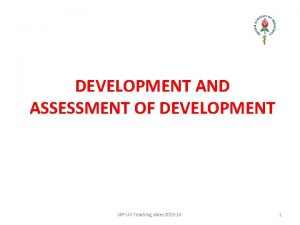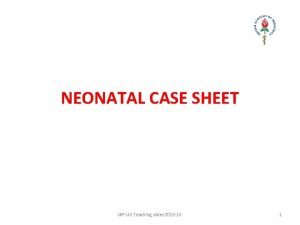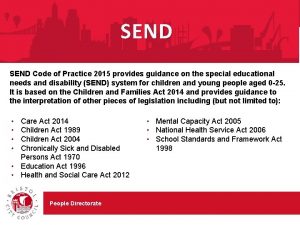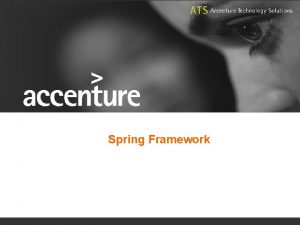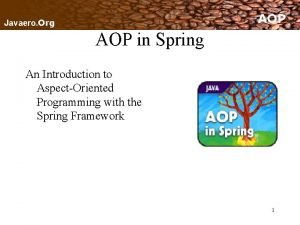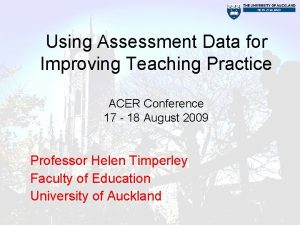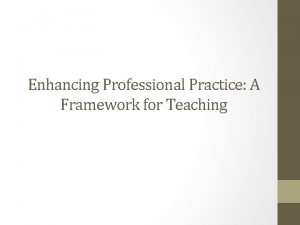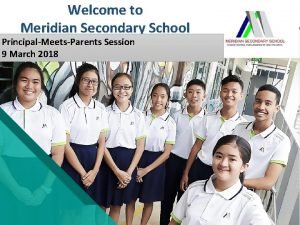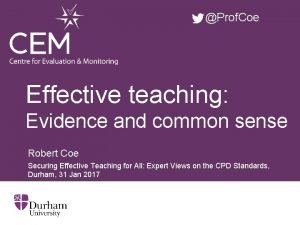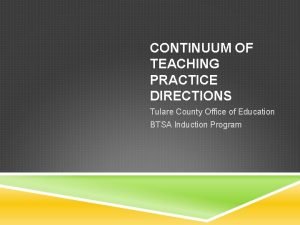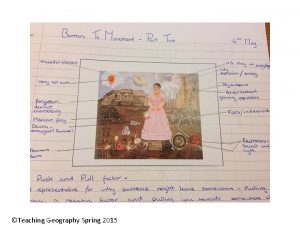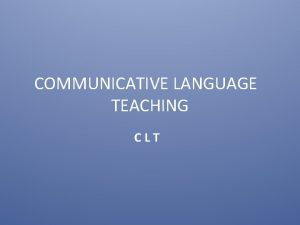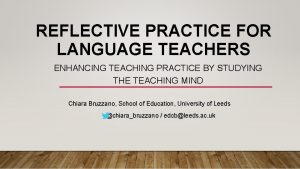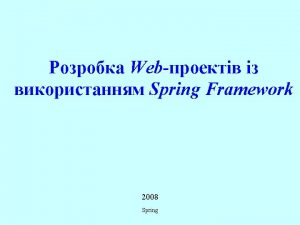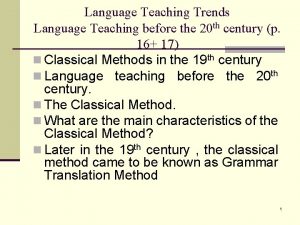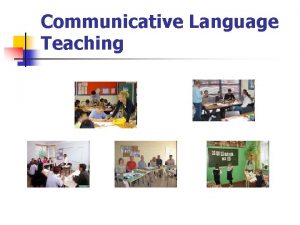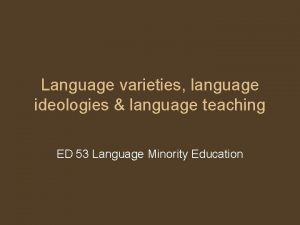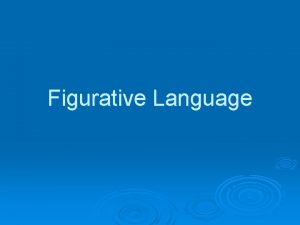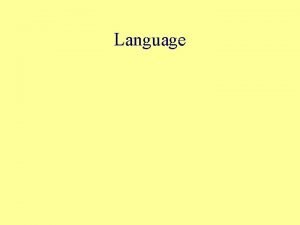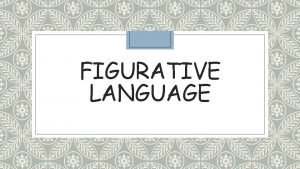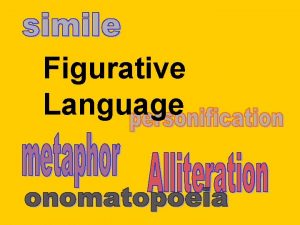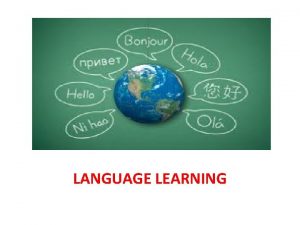LANGUAGE TEACHING PRACTICE Spring 2015 Introduction to the

















- Slides: 17

LANGUAGE TEACHING PRACTICE Spring 2015 Introduction to the Course

WHY DO WE LEARN? Why do we want to find out how people learn?

Learning Theories Approaches Methodologies Practice

Learning Theories Behaviourist Cognitivist Constructivist Connectivist ?

Main Approaches Oral based Approach Comprehension Approach Natural Approach Functional Notional Approach Communicative Approach

Main Methodologies (traditional) The Grammar-Translation The Direct Method The Audi-Lingual The Silent Way The Desuggestopedia The Community Language Learning The Total Physical Response

Innovative Methodologies Differentiated Learning Content-based Learning Strategies-based Learning Constructivist Language Learning Reflective Language Learning Web-based Language Learning Multiple Intelligences Oriented Connectivist Learning Participatory Approach Negotiated Language Learning

Innovative Methodologies Bilingual Language Learning Task-based Learning Learner-centered Language Learning Project-Oriented Learning Cooperative/Collaborative Learning Blended (Hybrid) Learning NLP Oriented Learning Lexical Approach Inquiry-based learning

Language Learning Practice Learning Strategies & Motivation Lesson Planning, Syllabus & Classroom management Materials & Assessment Teaching Listening and Pronunciation Teaching Grammar & Vocabulary Teaching Reading & Writing Literature & Technology

Grammar-Translation Aim: Helping students read and appreciate foreign literature Principles Literary language is superior to spoken language If you are able to translate you are successful Ability to communicate is not a goal Primary skills to develop are reading and writing Teacher the authority correct answers all the time Learning by comparing languages Forms are important Deductive teaching of Grammar Mental Exercise

Direct Method Aim: Learning how to use a foreign language to communicate Meaning to be conveyed directly through the use of demonstrations and visual aids

Direct Method Principles Language is Speech Reading and Pronunciation from the first day Objects to help understanding Grammar taught inductively. No Native Language Demonstrate: Not Explain or Translate Learn to think in Target Language Vocabulary in Full sentences Self Correction Speak as much as possible Syllabus based on Situation and topics NOT structures

Audio-Lingual Method Aim: Communication Behavioural Psychology Learning through conditioning

Audio-Lingual Method Principles Language form occur within context Language systems different keep them apart Teachers as models Habit formation Errors not tolerated Slots in sentences (single / Multiple) Positive reinforcement Overlearn

Audio-Lingual Method Principles Teacher Orchestra leader Structures more important than vocabulary Rules induced: NO memorization Overcome the habits by comparing languages Natural order is followed Culture and language inseparable: More than Literature & Art

Total Physical Response Aim : Communication Principles Meaning through actions Understanding the target language before speaking Speak when ready Imperatives powerful Observing and performing actions Success and low anxiety facilitate learning Errors tolerated Correction unobtrusive Novelty is motivating Learning more effective when Fun Emphasis Spoken over written

Introduction to LANGUAGE TEACHING PRACTICE Thank You
 Spring break 2015
Spring break 2015 Spring summer fall winter and spring cast
Spring summer fall winter and spring cast Spring summer autumn winter
Spring summer autumn winter Iap ug slides
Iap ug slides Neonatal case sheet
Neonatal case sheet Code of practice 2015
Code of practice 2015 Comparison between micro teaching and traditional teaching
Comparison between micro teaching and traditional teaching Spring introduction
Spring introduction Spring aop introduction
Spring aop introduction Using assessment data for improving teaching practice
Using assessment data for improving teaching practice Enhancing professional practice: a framework for teaching
Enhancing professional practice: a framework for teaching Educational psychology chapter 1
Educational psychology chapter 1 Meridian secondary school principal
Meridian secondary school principal Effective teaching evidence and practice
Effective teaching evidence and practice Continuum of teaching practice
Continuum of teaching practice Hát kết hợp bộ gõ cơ thể
Hát kết hợp bộ gõ cơ thể Ng-html
Ng-html Bổ thể
Bổ thể



